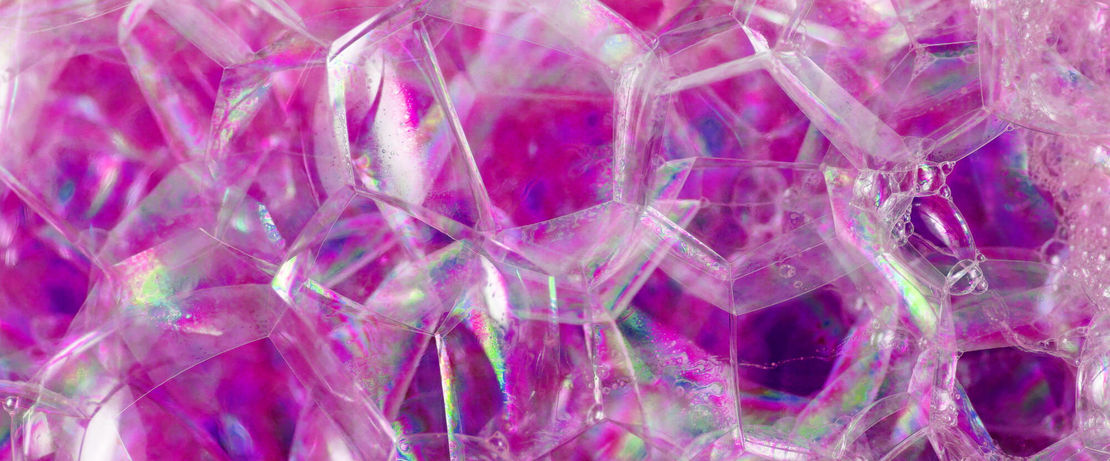
Different defoamer technologies for architectural coatings
Conventional Defoamers
Conventional defoamers – such as siloxanes, mineral oil, and other organic oil-based defoamers – are insoluble, low-surface-tension materials that work through an incompatibility mechanism. Generally, stronger defoamers are more incompatible while weaker ones are more compatible. Stronger defoamers are required for higher viscosity, higher pigment volume concentration, lower gloss, and thicker coatings where the foam is more tenacious, but these coatings also resist flow so they are less prone to craters and can accept stronger, more incompatible defoamers. Lower viscosity, thinner films, lower pigment volume concentration, higher gloss, and clear coats are easier to defoam but are more prone to cratering; therefore, weaker defoamers with more compatibility are warranted.
Typical conventional defoamers:
Molecular Defoamers
Molecular defoamers, which are unique to Evonik, are non-silicone, non-oil, surfactant-based defoamers and deaerators that are highly effective against macrofoam and microfoam. They provide good foam inhibition and knockdown. Because they also are surfactants, they usually provide good compatibility, thus offering the formulator a balance between good defoaming and good compatibility. They are suitable for low-viscosity, mid-high gloss, low pigment volume concentration (PVC) formulations and clear coats that may be highly sensitive to craters and pinholes. Molecular defoamers are also very effective at breaking microfoam (small bubbles <100 nm trapped within the liquid) where other defoamers are less successful. Because of their unique Gemini (twin) surfactant structures, they also can provide additional dynamic wetting properties to the formulation. Molecular defoamers can be used in combination with other defoamers to improve foam control.
Typical molecular defoamers:
Deaerators
Deaerators are specifically designed to work on bubbles in the bulk of the liquid. They act below the liquid surface by allowing bubbles to coalesce and rise to the surface quicker. Deaeration is more problematic with smaller bubbles, such as micro-foam, where the small bubbles do not rise to the surface quickly enough and get trapped in the bulk of the coating as it dries. Deaerators are effective in systems and applications that are prone to large amounts of air entrapment or micro-foam, such as when using airless spray and high volume, low pressure (HVLP) applications, high-viscosity systems, or fast dry times.
Molecular defoamers work well in defoaming as well as deaeration. Deaerators can also be modified siloxane deaerators designed to eliminate foam, pinholing, and popping problems in water-based coatings applied by airless, air assisted or HVLP spray technologies without generating surface defects. Deaerators can be especially effective against micro-foam, leaving a defect-free surface, even when thick layers are applied or when highly viscous coatings are sprayed.
Typical deaerators:
Defoamer summary
What does this mean for architectural coatings? Evonik's broad portfolio of defoamers allows much easier and more confident selection of an optimal defoamer for the variety of architectural coating formulations and applications. For example, one can follow these guidelines for defoamer selection. If pigment grinds are high in viscosity and pigment content and are subjected to high shear, these conditions indicate the need for a strong defoamer. For let-down and application foam, siloxane and organic-oil defoamers are suitable. For low-viscosity, lower PVC and thinner coatings, such as wood stains, more compatible defoamers or a molecular defoamer is optimal. For elimination of micro-foam as experienced with airless spray application of viscous coatings, try deaeration with a molecular defoamer or a deaerator. Some formulations require two different defoamers: one strong defoamer in the grind and one weaker defoamer in the let-down to address application foam.

Find your additive in 100 seconds
Product Recommendations, Formulation Assistance, Voice Control Interface: The AI-supported COATINO® network is your “all-in-one” solution to save time and money for developing new coating formulations.
